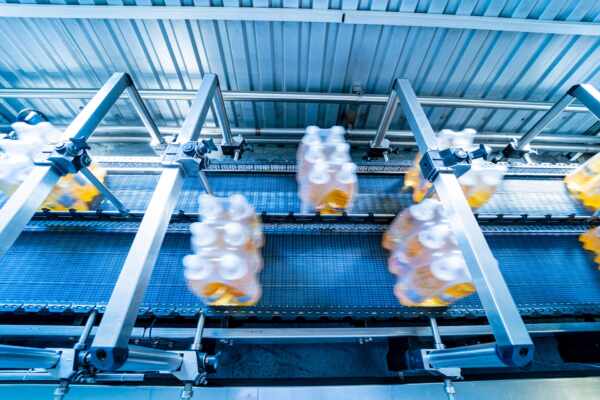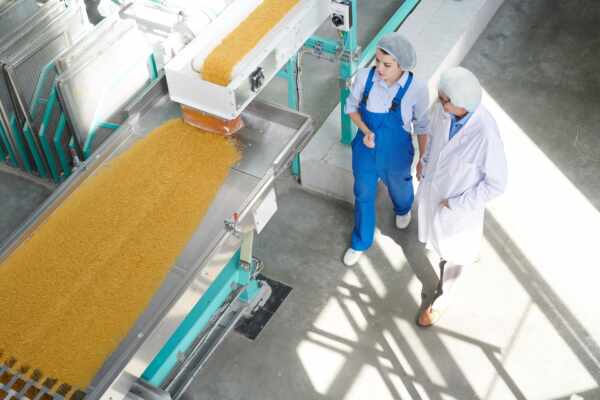Conveyor belts are the unsung heroes of many industries, tirelessly moving goods from one place to another in a never-ending loop. They’re like the arteries of a warehouse, factory, or distribution centre, pumping lifeblood in the form of products, parts, and materials.
But just like any other piece of machinery, conveyor belts consume energy—sometimes a lot of it. The good news is, with a few smart strategies and innovative technologies, we can significantly reduce the energy consumption of these industrial workhorses.
Energy efficiency in conveyor belt systems is a multifaceted concept. It’s not just about the type of conveyor belt used or the speed at which it operates. It encompasses everything from the design and layout of the system, to the materials used in construction, to the maintenance schedule. It’s a holistic approach, requiring a keen eye for detail and a deep understanding of how all these elements interact.
Optimising System Design
To achieve maximum energy efficiency in your conveyor belt system, it’s essential to optimise its design from the outset. This entails carefully considering every aspect, from the belt material and drive system to the layout and control options. Here are some key design principles to bear in mind:
1. Minimise System Length and Transfer Points: The longer a conveyor system and the more transfer points it has, the more energy it consumes. Aim for a streamlined and efficient layout that reduces these factors while still meeting your material handling requirements.
2. Choose the Right Belt Material: The type of belt material you choose can impact energy consumption. For instance, low-rolling resistance belts and lightweight materials can help reduce friction and energy usage.
3. Select Efficient Drive Systems: Opt for energy-efficient motors and drive systems that are designed to save energy, such as variable frequency drives (VFDs) and adjustable speed drives (ASDs). These technologies allow for greater control over speed and energy usage in your conveyor system.
4. Incorporate Accumulation Options: In systems where products often come to a stop, consider incorporating accumulation technology, which enables sections of the conveyor to continue moving while others are stationary, saving energy.
Implementing Regular Maintenance
Routine maintenance is crucial to ensuring that your conveyor system remains energy-efficient over time. By keeping the system in good working order and addressing potential issues promptly, you can minimise energy waste and maximise the system’s performance. Some essential maintenance practices include:
1. Lubricate Moving Components: Regularly lubricate moving parts, such as bearings and rollers, to minimise friction and reduce energy consumption.
2. Belt Maintenance: Inspect belts for signs of wear or damage and address any identified issues promptly. This helps to prevent inefficiencies caused by slipping, misalignment, or excessive tension.
3. Alignment and Tracking: Ensure that your conveyor system is properly aligned and tracking correctly to prevent excess energy usage, excessive noise, and belt damage.
4. Establish a Preventative Maintenance Schedule: Develop a comprehensive preventative maintenance schedule that outlines when and how often each component requires attention, helping you to stay proactive in addressing potential energy inefficiencies.
Selecting Energy-Saving Components
Incorporating energy-saving components into your conveyor system is an effective way to enhance energy efficiency. Some examples include:
1. High-Efficiency Motors: Choose energy-efficient motors that comply with relevant performance standards and guidelines and that match the specific requirements of your conveyor system.
2. Energy-Efficient Belting Options: Consider using low-rolling resistance belts that minimise energy consumption and friction during operation.
3. Energy-Saving Drive Systems: Integrate variable frequency drives (VFDs) or adjustable speed drives (ASDs) to enable more precise control over the conveyor’s speed and power usage.
4. Eco-Friendly Lighting: Install energy-efficient lighting solutions, such as LED lights, in areas surrounding your conveyor system to further reduce energy consumption.
Monitoring and Measuring Energy Consumption
To make informed decisions about energy efficiency within your conveyor belt system, it’s essential to accurately monitor and measure its energy consumption. Some methods for doing so include:
1. Install Energy Monitoring Devices: Use energy monitoring devices to track the system’s power usage over time. This gives you a clear, real-time picture of the system’s efficiency and any areas for improvement.
2. Set Energy-Efficiency Targets: Establish key performance indicators (KPIs) and energy-efficiency targets for your system to help gauge its performance and effectiveness over time.
3. Conduct Regular Energy Assessments: Carry out regular audits or assessments of your conveyor system to identify potential energy savings and areas for improvement.
4. Train Staff in Energy Efficiency: Educate your workforce on the importance of energy efficiency and best practices, empowering them to play an active role in reducing energy consumption and identifying any potential issues.
Understanding Energy-Efficient Design in Conveyor Belt Systems
The journey towards energy efficiency is a continuous process, requiring commitment, innovation, and adaptability. But with the potential benefits, it’s a journey worth undertaking. The future of conveyor belt systems, and indeed of all industries, lies in embracing sustainable, energy-efficient practices.
If you’re ready to transform your facility’s conveyor belt systems into a more energy-efficient and sustainable solution, our team of experts is here to help. Contact Change Parts Pty Ltd today to explore customised strategies and innovative solutions that can boost your system’s energy efficiency, reduce operational costs, and contribute positively to the environment.




